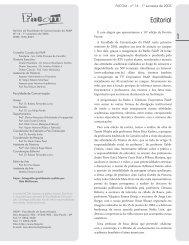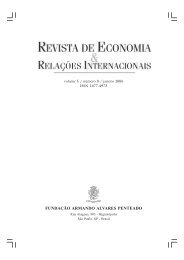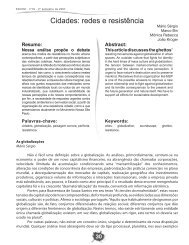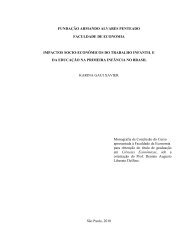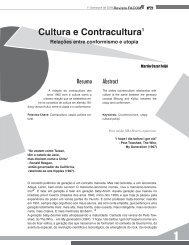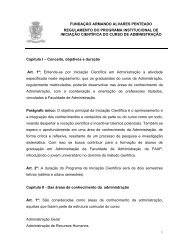Edição Especial - Faap
Edição Especial - Faap
Edição Especial - Faap
You also want an ePaper? Increase the reach of your titles
YUMPU automatically turns print PDFs into web optimized ePapers that Google loves.
Protection features<br />
Understanding of different creditor protection features is a third systemic<br />
issue that is worthwhile revisiting. Not only bonds issued in foreign currency<br />
yielded lower interest rates that those denominated in domestic currency to<br />
offset currency perceptions but bonds where applicable law was of certain<br />
foreign sites had also lower spreads than otherwise. The differential was usually<br />
attributed to the perception that creditor rights were more protected in those<br />
jurisdictions.<br />
The fact is that there were rulings of different nature in the case of a<br />
payment default, but so far they have not served for actual collection of unpaid<br />
obligations. Even the enforcement of attachments has proven difficult to the<br />
point that – in practical terms – no enforcement of contracts was possible<br />
through this route several years after the terms of the obligation remained<br />
altered. This outcome can be explained by a combination of factors, such as<br />
that no assets were exposed to possible attachments and rulings that effectively<br />
were not conducive to immediate actions.<br />
Other protection mechanisms that were in place guarding foreign<br />
law/currency securities like pressure exercised by international organizations<br />
looking after the interest of the related holders also diminished significantly due<br />
to the facts explained previously. The effective outcomes occurred so far do not<br />
necessarily mean that those will prevail in the future. Given that the sovereign<br />
nature of the debtor, it cannot be ruled out that at some point political entities<br />
would intervene. So far, they have been reluctant to do so, and are likely to<br />
continue with similar attitude, but enforcement of rulings in third party<br />
jurisdictions involving those debtors sometimes require going through<br />
channels governed by political entities of different nations.<br />
Recently, domestic currency/law securities have revived. This is consistent<br />
with both, currency realignment prospects, as well as the realization that, in the<br />
end, the practical differences between domestic and foreign currency/law when<br />
protection is concerned might not be as thought previously.<br />
Resolution process<br />
Sovereign debt resolution process or the lack of it when bonded debt is<br />
prevalent, is a fourth issue to be discussed. There is an established debt<br />
resolution process for pure private sector situations that works across different<br />
jurisdictions. Even when not used it serves as a reference for out-of-court<br />
settlements. Nevertheless, situations where the sovereign is involved are beyond<br />
the boundaries of those mechanisms.<br />
Previously also certain commonality of interest and some homogeneity of<br />
the creditor group created incentives for consultations that in the end lead to<br />
an agreement where holdouts ended up being less of an issue.<br />
Currently, we are witnessing increased litigation due to a certain vacuum<br />
in the resolution mechanisms. As a consequence of that, Courts are becoming<br />
more relevant.<br />
Collective Action Clauses were designed to deal with it, but so far they<br />
160<br />
Revista de Economia & Relações Internacionais, vol.5(edição especial), 2006






